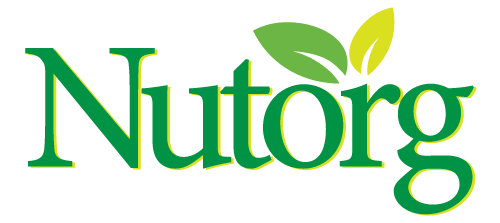
Benefits of Environmentally Friendly Food Packaging Products in Malaysia
Introduction: Going Green in Malaysia’s Food Industry
Malaysia’s food industry is embracing a green revolution. More businesses are adopting environmentally friendly food packaging in Malaysia to reduce plastic pollution. Sustainable packaging is becoming the new standard from small cafes to large chains. The benefits of eco-friendly packaging go beyond just environmental protection—they also offer commercial, social, and brand advantages.
Environmental Benefits: Reducing Malaysia’s Waste Crisis
One of the biggest advantages of environmentally friendly food packaging is reducing waste. Malaysia produces over 38,000 tonnes of waste daily, of which nearly 13% is plastic. Traditional plastic food containers often end up in landfills or oceans, where decomposing takes hundreds of years.
Switching to biodegradable or compostable materials like bagasse, paper, and PLA helps reduce long-term waste. These materials break down naturally, reducing the harmful impact on soil, rivers, and marine life. Businesses using green packaging are contributing to a cleaner and healthier Malaysia.
Health and Safety Advantages
Many plastic containers release toxins, especially when heated. These toxins can leak into food and beverages, posing consumer health risks. Eco-friendly packaging, made from natural or plant-based materials, is nontoxic and safe for food contact.
For example, sugarcane pulp (bagasse) or bamboo packaging is chemical-free and heat-resistant, offering a safer alternative. Consumers are becoming more conscious about what touches their food, and secure packaging builds trust.
Boosting Brand Image and Customer Loyalty
Sustainable packaging enhances your brand’s image. Consumers in Malaysia are starting to value businesses that care about the environment. When customers see eco-packaging, they associate the brand with responsibility, care, and progressiveness.
Restaurants, cafes, and food delivery services using eco-friendly packaging often enjoy increased customer loyalty and better online reviews. A green business stands out from the crowd, especially among millennials and Gen Z consumers who are more eco-conscious.
Meeting Malaysian Regulations and Trends
The Malaysian government is moving toward stricter environmental laws. Initiatives like the “Roadmap Towards Zero Single-Use Plastics 2018–2030” are being implemented across states. Businesses that adopt green packaging early stay ahead of these regulations.
Complying with such policies avoids fines, improves public relations, and attracts government support. Being proactive in sustainability helps companies stay compliant and competitive in a changing market.
Financial Savings in the Long Run
While the initial cost of eco-friendly packaging may be higher, businesses can save money in the long term. Here’s how:
- Bulk orders reduce per-unit cost
- Improved brand loyalty increases repeat customers
- Reduced waste disposal costs
- Potential tax incentives and government grants
Moreover, eco-friendly packaging is often lighter in weight, which can reduce shipping costs for food delivery services and eCommerce food businesses.
Enhancing Malaysia’s Global Image
International tourists and investors are paying attention to sustainability. Businesses that use eco-friendly packaging contribute to Malaysia’s image as a modern, green-conscious nation. This positive branding can attract eco-tourists and foreign partners who prioritize sustainability.
Food exporters in Malaysia also benefit by meeting global packaging standards that require compostable or recyclable materials.
Supporting Local Green Packaging Industries
By switching to sustainable packaging, businesses support local green-tech suppliers. This strengthens Malaysia’s eco-business ecosystem and creates jobs in the green economy. Choosing local suppliers reduces carbon emissions from imports and stimulates domestic innovation.
FAQs
1. What materials are considered eco-friendly for food packaging in Malaysia?
Common options include paper, bagasse (sugarcane fiber), bamboo, cornstarch-based plastics (PLA), and palm leaf. These materials are biodegradable, compostable, or recyclable.
2. Is eco-friendly packaging more expensive than plastic?
Initially, yes. However, bulk orders and reduced long-term costs (like waste management and shipping) make eco-packaging more economical.
3. Does Malaysia offer any support or incentives for green packaging?
Yes. Agencies like SME Corp, MGTC, and MIDA offer sustainability grants, green tech financing, and training programs to encourage eco-practices.
4. Can eco-packaging be used for hot or oily food?
Absolutely. Materials like bagasse and PLA are heat-resistant and grease-proof. They’re suitable for hot meals, takeout, and delivery services.
5. Where can I source environmentally friendly food packaging in Malaysia?
Reliable suppliers like Green Eco Paradise, Foodabox, Ecopack, and Biodegradable Tableware Malaysia offer a wide range of sustainable products for different business sizes.
Conclusion: A Smart Move for Business and the Planet
Environmentally friendly food packaging is more than a trend in Malaysia—it’s a necessity. It reduces waste, enhances food safety, improves brand image, and ensures compliance with government regulations. Though the initial cost may seem high, the long-term benefits make it a wise investment.
Businesses that embrace sustainable packaging show leadership, responsibility, and foresight. In doing so, they help protect Malaysia’s environment and build a brand that customers trust and respect. Going green with your packaging isn’t just good for the planet—it’s good for business too.
